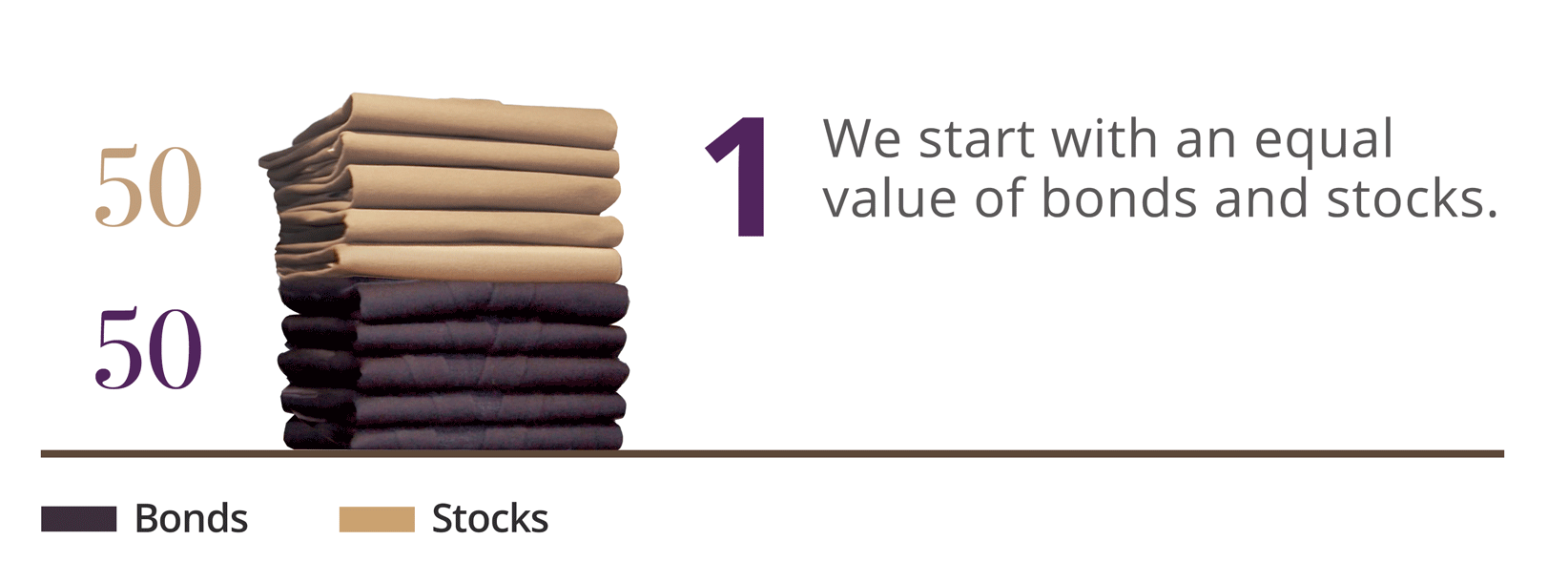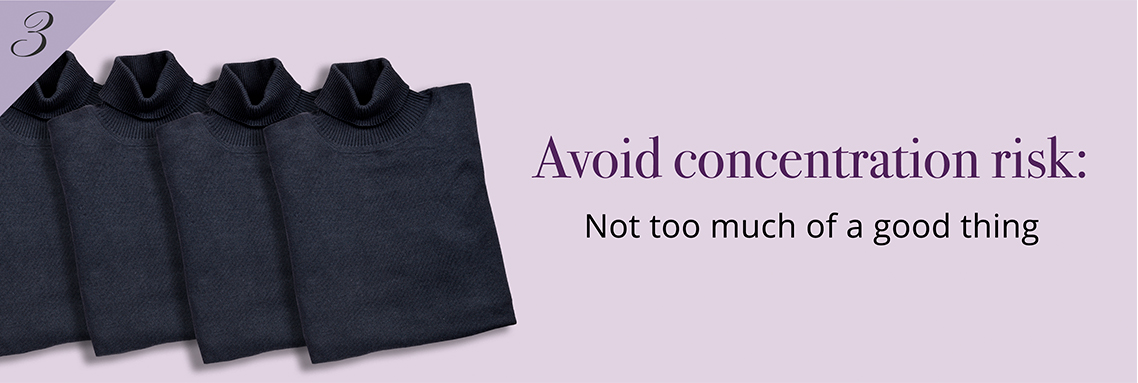Building an investment portfolio is like building out your wardrobe – it’s a collection of handpicked pieces that fit your needs, profile and preferences. There are the ‘basics’, such as stocks, bonds, unit trusts. Probably a few ‘adventurous’ pieces, like commodities or FX. And of course, the reliable go-to for any situation, cash.
And yet, no two investors’ portfolios are exactly alike, even if their tastes might be similar. Even copycat investors aren’t always to fully replicate another investor’s strategy, because they might be too late to the trade. So, you’ll always want to ensure that your portfolio reflects your specific needs and objectives.
You achieve this through portfolio rebalancing – a regular exercise to maintain the original asset allocation. Here are a few principles to get started.

Every portfolio is made up of a few asset classes. As each class performs differently in the same market environment, you should invest in multiple classes to reduce the risk that any set of conditions will hurt your entire portfolio.
For example, the ‘equities’ class can be made up of stocks, equity unit trusts and stock-related ETFs, just as ‘shirts’ come in many colours and designs.
Each asset class has a weight, or the percentage of the total portfolio value. So if you’ve S$3,000 worth of stocks in a S$10,000 portfolio, the weight of stocks in your portfolio is 30%. The relative weights of individual asset classes, or asset allocation, is tailored to you depending on your risk preference.

Over time, you might find the make-up of your wardrobe changing. One day, you may realise that you have too many white shirts, or perhaps you’re running out of casual wear for the weekend.
It happens with portfolios too. But unlike your wardrobe it can happen without you realising it, due to asset classes performing differently in the same market.
Let’s say you have an allocation of 50/50 stocks and bonds. If the stock market performs phenomenally, the value of your stocks will rise in relation to bonds. This means your portfolio no longer fits your risk profile and needs to be rebalanced:

In reality, it’s a much more complex task. You’ll have to consider the risk levels of individual assets to buy and sell, to maintain your preferred allocation without changing your portfolio’s risk profile.
To help with this challenge, our Chief Investment Office publishes quarterly model portfolios for various risk appetites – Conservative, Moderate and Aggressive. With the Wealth Management Account, you get a recommended asset mix to customise a portfolio that works for you, and is in line with the DBS house view.

When it comes to your wardrobe, too many of the same piece may make your ensembles less versatile.
Similarly with your portfolio, it’s best not to have too much of a single asset, for instance a particular FAANG stock, or a particular emerging market fund. Any movement in the asset could have a disproportionate effect on your portfolio. This is called concentration risk.
One rule of thumb is the 5% rule. You don’t want any one stock, funds (also known as unit trust) or any other security to exceed 5% of your total portfolio value. So if market gains in one security pushes it above 5%, sell some of it and buy more of another.

If you’ve ever had a style consultant assemble a wardrobe for you, you’ll be impressed by her eye for pieces that look just right.
The investing equivalent will be portfolio managers who’ll handle the nitty-gritty of rebalancing for you. These experts specialise in researching, building and maintaining portfolios.
Traditionally, access is limited to ultra-high net worth investors due to the investment amounts needed.
However, there’s a new option – hybrid robo-advisors. Like smart digital ‘lookbooks’ that can recommend a look for you, these hybrid robo-advisors combine the skills of investing experts and the ease of digital access to rebalance your portfolio quickly, automatically and affordably.
Take digiPortfolio on digibanking for example, which offers hassle-free, ready-made investment portfolios to suit a variety of profiles:
- SaveUp: For those looking for a more stable way to grow their spare cash
- Income: For those seeking a regular payout
- Asia: For those who prefer regional exposure
- Global: For those willing to take global exposure
All 4 portfolios are monitored by the DBS investment team, which also aligns the allocations to the DBS Chief Investment Office’s views every quarter. This way, you can truly leave your investment decisions with the experts.
As you rebalance your portfolio, it’s vital to ensure that your investment portfolio fits you. Even as you monitor your investments through your Wealth Management Account, it can help to bounce off ideas with a human advisor.
With DBS Treasures, your Relationship Manager can construct personalised investment portfolios for you, using proprietary client advisory tools. Based on the Chief Investment Office’s market views and top picks, these portfolios are maintained by an internal network of investment experts.
Keen to discuss the balance of your portfolio? Start the conversation with the experts at DBS Treasures today.






